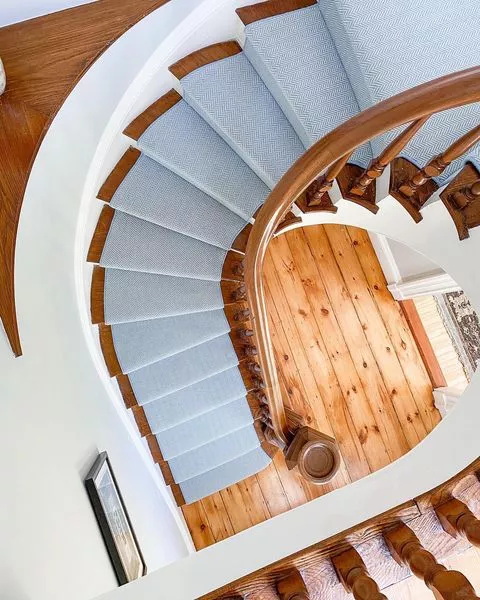Let's transform your
house into a home
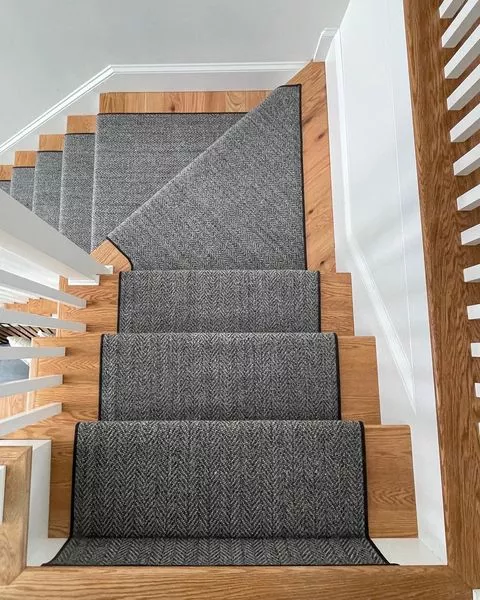

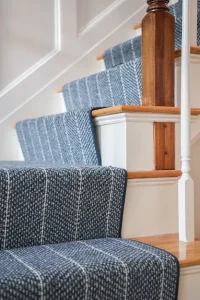
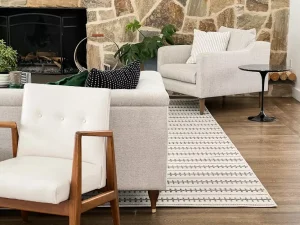
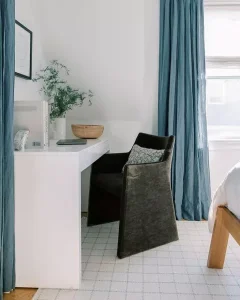
We know you’ll likely have a few questions before you begin your carpet project. We’ve gathered some of the questions we get most frequently for your convenience. If your question isn’t listed here, please reach out! We’re glad to help.
If the standard sizes that area rugs are made don’t work for you, we are able to create exactly what you need. When you’re inquiring about a custom area rug, please send along photos of the space and any room dimensions you can provide.
The more information you can provide up front, the faster we’ll be able to get your new rug into production.
If you have any photos or links to products that served as inspiration, please send those along as well. The best way to submit your inquiry is by filling out our “Start the Process Online” form found on our Out of Region page.
If you are having a tough time finding the right material, check out our gallery as well as our Pinterest and Instagram pages!
As soon as a 75% deposit is received and an order placed for in-stock stair runner material, we schedule installations 4-6 weeks out. If material is non-stocking, it may take longer depending on the timeline.
Narrow Cotton Binding: If you want your binding to be more low-key, this style will be your best bet. Narrow binding typically uses cotton or polyester materials. This look still offers protection to your finished carpet without having to take away attention from the actual carpet material. If you want a more subtle look you might select for a binding that is 1.25” which simply wraps the edge of the rug.
Wide Cotton Binding: We recommend this option if you want your binding to stand out from the rest of your finished carpet. You can expect more protection as it covers most of the edging. Wide binding is typically made with cotton but also premium materials such as leather, linen, or twill. A binding that measures 3” works best to create a more casual bordered look. You can show up to 1.5 inches on the face of the rug or runner. We also have a 5” option which makes the binding pop out while also covering a sizable amount of edging. A 5 inch binding allows you to show more than 2″ on the face of the rug or runner.
Serging Yarn: This style uses a continuous yarn to create a narrow edge. What’s unique about this binding is that it produces a more handcrafted look that is more intricate than other styles. While serging can be applied by hand, The Carpet Workroom typically applies it by machine for the cleanest result.
There are four popular types of binding materials that can be applied to your carpet: polyester, cotton, leather, and linen.
Polyester: This is also commonly known as synthetic binding. This type of material guarantees your finished product will receive the best protection against any environmental factors. Given its durability, we recommend you choose this option if your finished carpet will be located in an area with high foot traffic. This option will also pair well with indoor/outdoor materials.
Cotton: Cotton is usually the go-to material for a more visually appealing style. Cotton’s versatility allows you to choose from a variety of sizes and colors available. Cotton is more expensive than poly but it gives it a cleaner finish. It’s also a very cleanable fabric so it works well in areas of high traffic.
Linen: Despite its resemblance to cotton, this material is considered as a more durable option given its bulkier and thicker characteristics. It is also more resistant to fading, providing you peace of mind that it will hold its true colors over an extended period of time.
Leather: We would consider this as one of our finest and most beautiful materials available. Leather will offer extra protection with its tough durability. As leather breaks down, it produces a sheen that will give the binding a stylish look throughout its whole lifetime. We offer both real leather as well as faux leather binding options.
To simplify: carpet is the raw material and an area rug is the finished product. Carpet is an unfinished fabric made on a loom. These materials are typically manufactured 12’, 13’2”, 15’, or 16’4” wide. From this material, a few products can be made. It can be installed wall to wall or can be made into area rugs or runners.
The process simply requires a clean cut and a finished edge which we typically call “binding” or “edging.” The process of turning broadloom carpet into rugs and runners is called “fabrication.”
Wool: Wool is typically the most frequently used and most recommended material for stair runners. It is naturally durable, soft on the feet, and will last many years on your stairs. Wool is the most common material here at the showroom and we have thousands of wool options for any style stair runner. The flatter the wool, the better it will hold up on your stairs. It is important to keep in mind that wool is typically the most expensive material. The more color or pattern, the higher the price tag. When in the showroom we can work with your budget to guide you to the right material selection for your stair runner.
Wool Blends: Wool blends are also great for stair runners. Wool is often blended with a synthetic material like polyester or nylon to add some strength while maintaining the softness of the wool. Blending the material also often decreases the price, which is another benefit of a wool blend.
Synthetic (Nylon, Polypropylene, Polyester, etc.): Synthetic materials are made to stand the test of time. Because of their makeup, they are often easier to dye as well. If you are looking for a stair runner with a solid texture but a pattern or color, synthetic materials are often your best bet. They are typically easy to spot clean and will last as long if not longer than a wool rug. The price point for most synthetics is also usually lower than a 100% wool rug. The most important thing to consider is the thickness of the rug and how it will look when installed over stairs.
Natural Fibers (Sisal, seagrass, jute): While seagrass is not recommended for stair runners due to its hard texture, sisal and jute are great alternatives for stair runners. Many customers are turned off by the rough texture of sisal rugs, but on stairs where you are not spending much time, sisal is a great option. Sisal and jute stair runners can add a natural, casual look. These natural fibers are typically on the lower side of the price range as well. The main drawback is the ability to spot clean, as sisal rugs often leave water spots.
Materials to Avoid: Silk, linen, thick plush carpeting
If you want your binding to make a statement, then nail heads are the way to go. These are typically applied onto a binding to give it a more classy look. Nail heads are intended only to be applied onto a wide binding material, like leather. While nail heads can be applied to rugs, they pair up perfectly with stair runners.
Once your area rug or stair runner has been cut out and prepared for your space, it is now time to apply the chosen binding. Carpet binding requires patience and precision to ensure that it is properly attached to your final masterpiece.
All of our binding is attached by using a sewing machine, commonly known as a binding machine. This machine offers a quick and precise method to rapidly attach the binding material, rather than doing it by hand, which can delay the process.
The first step is to place your area rug or stair runner on an air table. This table allows our fabricators to move the carpet around without having to deal with its weight and its size. That way, they can focus more on proper placement of the binding. Finally, our fabricators complete a final quality check. This includes completing any final touches, such as cutting off excess material and making certain the binding is properly attached.
The answer is yes. Any wood refinishing or painting should definitely be done before installation of your stair runner. We would hate to put a beautiful new stair runner in your home only for it to get ruined with a drop of paint! We also want to make sure everything is completely dry before install, so at least 3-4 weeks is recommended.
This definitely varies since each staircase is unique. However, 3-5” on either side typically looks great. We will always advise on the best width for your runner and we will always tell you if something is not possible on your stairs.
It is also helpful to look through our gallery of installation photos to see what is preferred for your project.
Yes! There is a 40 oz. pad that goes underneath and extends the life of a stair runner While adding comfort to your steps.
It depends on your stairs. Straight sets of stairs and stairs with one landing are the easiest to utilize a remnant for. We can typically evaluate your stairs based on photographs and estimate a remnant size you may need.
Given the traffic of movers going up and down the stairs in your new house. We recommend you have your stair runner installed after the movers have completed their job. It’s great to start the process before you move in so as soon as you’re moved in, we are ready to install! The process from ordering to install is about 4-6 weeks, and that is if the material is in stock at the mill.
There is no ‘right’ answer for this one. Depending on the width of your runner, larger scale patterns may not show enough repeat. There is a chance you can lose the pattern altogether. Smaller patterns tend to read as textures.
Customers are sometimes concerned smaller patterns will be dizzying or distracting on stairs, but it often works the opposite!
With stairs that have many pie shaped steps or landings, it’s important to be clear how the pattern will sit on the stairs. Here is an image of a simple pattern that can be complicated with all of the pie steps.
Waterfall: The “Waterfall” method involves bringing the carpet over the edge of the tread and straight down the riser to meet the next tread. Without molding it to the riser, it creates a waterfall effect.
Hollywood: The term “Hollywood” style refers to a specific installation method. The installer is tacking down the carpet directly to the staircase. As you can see, the carpet is wrapped around the edge of the tread, contouring the nosing to meet the riser. The carpet or runner gets stapled under the nose of the stair.
Straight Stairs: A typical straight stair runner has 12-13 steps. Bringing in photos and basic measurements of your stairs is a great place to start. We offer many pre-made stair runner materials as well as carpet remnants that are perfect for straight sets of stairs.
Stairs with a Landing: The second most common type of staircase we see are those with 12-15 total steps, with a small landing in between. Some sets have multiple landings, and these often require us to come for a site visit to measure the stairs and the landing. However, when coming into the showroom to browse materials, photos of the stairs are typically enough to provide an estimate.
Stairs with Pie Turns: Stairs with pie turns always require a measurement prior to installation. We can typically quote based on the photos but our installation team must measure the steps. This is to ensure the carpet is cut at the right angles. In cases of larger patterns, it also ensures everything matches up.
No, our prices are for material costs alone, and installation pricing is calculated on top of that.
As soon as a 60% deposit is received and an order placed for in-stock stair runner material, we schedule installations 4-6 weeks out. If material is non-stocking, it may take longer depending on the timeline.
Material Size: Broadloom material installed as a stair runner has some funky nuances. Broadloom material often comes 12′ or 13’2 wide. Therefore, we do not simply roll out the carpeting to install it on your stairs. Instead, the roll is cut into segments to cover 2-3 steps at a time. There is no visible start and end point noticeable to you, and we work tirelessly to align the pattern. For a straight set of stairs, a 12 or 13’2 x 6 piece is typically required. This will help understand your estimate.
Green guard is a stain preventative that we spray onto carpet at an additional cost. The spray-on product is safe for kids and pets, while ensuring the color of your carpet doesn’t fade and looks newer for longer!
Green guard is formulated with the following features:
– Non toxic
– Skin Friendly
– Biodegradable
– and no fragrances!
Accidents are bound to happen. Whether it’s a spilled drink or perhaps walking in with dirty shoes, your carpet will inevitably develop stains. The last thing you want to do in this scenario is leave the mess and deal with it later.
If you let the stain settle in, not only will it be harder to get rid of, but it can also stay there permanently, completely ruining your rug or stair runner. The quicker you act on cleaning up, the more likely you can save the carpet material from developing a permanent stain. The moment the carpet gets dirty, you should act as quickly as possible to remove any solid or liquid residue as this will make the rest of the clean up much more easier for you.
When dealing with a spill to avoid a long-term stain, here are some quick tips to help you get started.
If you don’t have a specific carpet cleaning product, you can always create your own with materials you likely have at home. Here is one we recommend that is easy on many carpet materials:
Mixture of water, vinegar and dish soap:
This quick at-home solution is gentle on carpet materials — even premium materials such as wool — and it’s formulated to get rid of some of the toughest stains.
Ingredients:
2 cups of water
1 tablespoon of Vinegar
1 tablespoon of Dish Soap
Here are some other tips to keep in mind when taking care of the stain at home:
Be sure to always use a white cloth
Make sure you completely avoid any type of colored cloth, as they can cause more harm than good. The dye from a colored cloth or towel can actually rub off onto the carpet material when you’re cleaning the spill. By using a white cloth, you can save the carpet from getting even more strained than it already is.
Don’t rub in the stain
Our first instinct when we deal with a stain is to scrub it away. What this actually does is push the stain deeper into the carpet material. You might even cause a permanent stain with this action.
Our recommendation is to first blot out the stain by gently placing an absorbent cloth on it. This will help absorb most of the spill from the top layer and stop it from going deeper into the material. This now makes it easier to clean up the rest of the stain, allowing you to use any other cleaning methods.
If you have pets in the home, we recommend flat-weave wool, cut pile, and loop pile carpet styles.
Luxury Vinyl Tile, or LVT, is a hard surface flooring made up of high-quality, resilient vinyl materials.
If you’re looking to keep costs low, LVT is a great option for you! You can choose from many styles that come in a variety of designs resembling many of the costly hard surface flooring, such as hardwood, ceramic tile, or stone.
LVT is designed to last you at least 10 years and upwards of 20 years, thanks to its high-quality, durable materials. Design styles are constantly refreshed, giving you the ability to introduce new aesthetics into your space much more frequently compared to the more traditional hard surface
flooring options.
We recommend LVT for commercial businesses and homeowners looking for a low-cost, hard surface flooring option. Traditional hard surface flooring can get quite expensive, but it can also
be a difficult investment to make if you expect constant foot traffic. LVT offers peace of mind
considering how easily it can be replaced and how stylish it it can make a space appear.
One of the reasons many people prefer LVT flooring for their space is its ease of install.
LVT installation is simple compared to many other flooring options, thanks to its “click-system.” The
tiles are equipped with tabs on the sides so that you simply have to push them together and they click into place. This helps speed up the LVT installation process. Plus, you can walk across your floors immediately after installation!
Absolutely! One of the reasons many homeowners go for LVT is its durability. It’s engineered with properties that can handle wear and tear much better than traditional hardwood flooring. It also is prepared with scratch resistant properties, making it a perfect option if you have pets or children at home.
Yes. LVT is made using high quality vinyl and plastic materials that allow it to be exposed to
moisture without much issue. For this reason, many homeowners tend to place LVT in basements or areas prone to flooding.
That’s not a problem! Visit our Out of Region page to learn how we can still work together on your project.
Of course! We allow our customers to borrow samples from our showroom for up to a week. We are also happy to order complimentary samples straight to your home that you may keep. These take 5-7 business days.
Describe the type of project you are working on, attach photos of the space, and let us know where you are located! You can also tell us your budget, which will be super helpful when suggesting materials for your project.
This is a question we are asked all the time. It’s also a phrase that is often confused. So if you’ve ever felt awkward asking about it, you are not alone.
First, “carpet remnants” is the title we have given to any piece or roll of carpet that is sold at a discount. Remnants are typically small pieces of carpet that are left over after an installation or once a fabrication is finished.
Carpets are manufactured most often in 12′ or 13’2″ widths. However, like our customers, spaces are unique so many jobs are either smaller than that dimension or are bigger. This would mean as a buyer, you would have to buy extra material that you don’t necessarily need. A lot of retailers will order excess material, leaving installers with an abundance of material. Most remnants stay with the customer, but often times there is so much that the installer is left with the material. These types of situations are how we get our hands on remnants.
Roll ends are quite different. Roll ends are the excess materials left at the manufacturer. Those same 12’ and 13’2 widths are typically manufactured in rolls up to 200’ long. As retailers order the material, the manufacturers make cuts until the roll is empty. Often times the rolls are depleted to a point where there is nothing sellable left. Anything under 25’ long is then considered a roll end. The roll ends that are warehoused the longest end up being sold to retailers at a discount.
We use “carpet remnants” to keep it simple, but the industry isn’t always as such. In our case especially, we seek out remnants and roll ends from high-end, wool manufacturers. Because of this, we never know what patterns, colors, or sizes will be available. We do try to remain consistent in the timing of our orders. We purchase at least one large remnant package a month which includes dozens of remnants. Our goal is to offer luxury material for less.
Carpet remnants make excellent area rugs and runners. All can be customized for shape, size, and fabrication. We purchase them from mills all over the world/country and from local installers that don’t have the opportunity to sell the remnants on their own. All of this allows us to maintain a unique selection for many types of projects. Here are some jobs we have done with our carpet remnants!
This is how we were able to win “Green Business of the Year Award for Needham”. All these leftover pieces would be put into a landfill. Give yourself a pat on the back for being green!

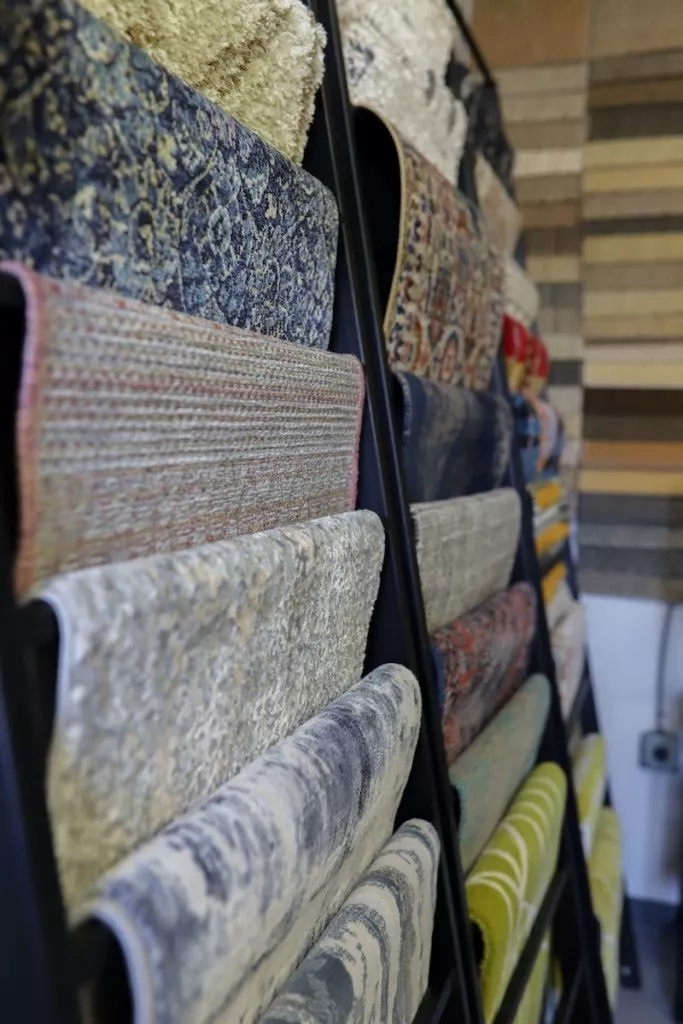
When you choose one of our locations, you’ll have the option to schedule an in-person visit or a phone call.
Outside of the Northeast? Find out how we can still work on your project!
